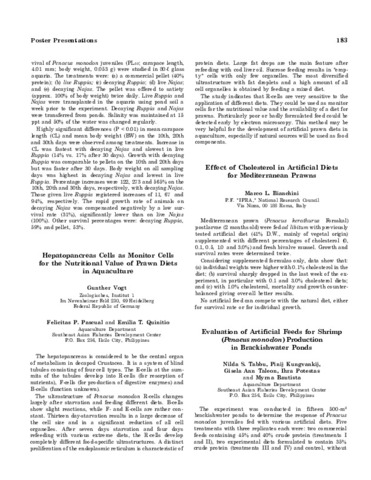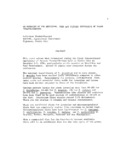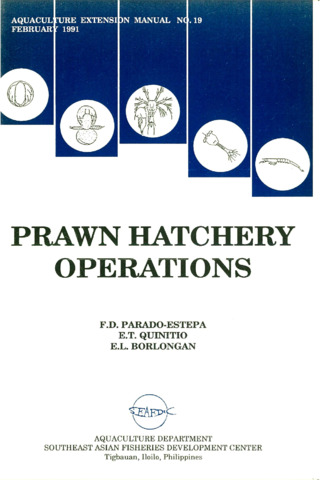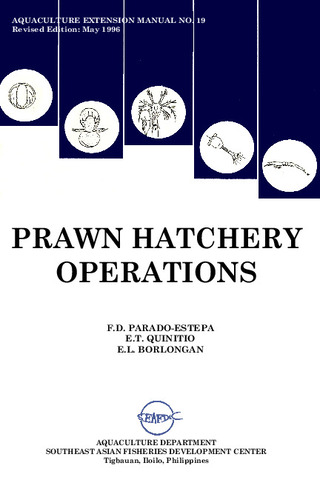Evaluation of artificial feeds for shrimp (Penaeus monodon) production in brackishwater ponds
Share
Abstract
The experiment was conducted in fifteen 500-m2 brackishwater ponds to determine the response of Penaeus monodon juveniles fed with various artificial diets. Five treatments with three replicates each were: two commercial feeds containing 45% and 40% crude protein (treatments I and II), two experimental diets formulated to contain 35% crude protein (treatments III and IV) and control, without feeding (treatment V). Shrimp were fed twice daily at feeding rates based on shrimp consumption.
Highest mean harvest weight was attained in treatment I (23.47 g) > III (19.25 g) > II (18.86 g) > IV (11.29 g) > V (9.27 g). Statistical analysis showed that differences in growth were significant at 5% probability level. However, growth in treatments I, II and III are comparable, also growth in treatments II, III and IV. Growth in treatments I, II, III and IV was significantly different from treatment V. Highest mean survival was attained in treatment III (91.82%) > I (88.93%) > II (86.95%) > IV (83.62%) V (82.62%). Statistical analysis showed no significant differences among treatments at 5% probability level.
Projecting on a hectare basis, mean yield for each treatment was: I (628.37 kg) > II (496.35 kg) per crop in 120 days culture. Good yield was attributed to provision of formulated feeds, use of pumps in addition to tidal change for water exchange and control of predators, and pest eradication through proper pond preparation.
Description
Abstract only.
Suggested Citation
Tabbu, N. S., Kungvankij, P., Taleon, G. A., Potesta, I., & Bautista, M. (1985). Evaluation of artificial feeds for shrimp (Penaeus monodon ) production in brackishwater ponds (Abstract only). In Taki Y., Primavera J.H. and Llobrera J.A. (Eds.). Proceedings of the First International Conference on the Culture of Penaeid Prawns/Shrimps, 4-7 December 1984, Iloilo City, Philippines (pp. 183-184). Iloilo City, Philippines: Aquaculture Department, Southeast Asian Fisheries Development Center.
Subject
Taxonomic term
Related items
Showing items related by title, author, creator and subject.
-
An overview of the nutrition, feed and feeding techniques of prawn penaeid/shrimps
Piedad-Pascual, Felicitas (Philippine Council for Aquatic and Marine Research and Development, 1989)This paper echoes what transpired during the first International Conference of Penaeid Prawns/Shrimps held in Iloilo City in December 4-7, 1984, particularly on the Nutrition nd Feed Development. Around 25 papers were ... -
Prawn hatchery operations
Parado-Estepa, Fe D.; Quinitio, Emilia T.; Borlongan, Emeterio L. (Aquaculture Department, Southeast Asian Fisheries Development Center, 1991-02)The manual, an updated version of the 1984 SEAFDEC/AQD manual, presents the underlying principles and step-by-step instructions of prawn larval and post-larval rearing. The techniques described are not only applicable to ... -
Prawn hatchery operations
Parado-Estepa, Fe D.; Quinitio, Emilia T.; Borlongan, Emeterio L. (Aquaculture Department, Southeast Asian Fisheries Development Center, 1996-05)The manual, an updated version of the 1984 SEAFDEC/AQD manual, presents the underlying principles and step-by-step instructions of prawn larval and post-larval rearing. The techniques described are not only applicable to ...





